Spiders were also called toads in ancient times (pronounced the same as "poisonous"), and in Cantonese they were called cockroaches. The order Araneae is the most numerous order in the class Arachnida. There are 132 families, 4325 genera and 51164 species. They are widely distributed around the world, with different varieties and different habits. Some are tiny and inconspicuous, while others are huge and highly poisonous. Most known spiders are carnivorous predators that inject venom to protect themselves or kill their prey. However, only about 200 species bite humans and may pose a health problem to humans.

Interior of a female double-lunged spider Anatomy diagram
Spiders can be roughly divided into web-building spiders and hunting spiders based on their way of life and hunting. The most important characteristic of a web-building spider is its web-building behavior. It is the main means of hunting for spiders. Nomadic spiders do not build webs, but wander around or disguise themselves to hunt prey. Spiders are not food on the table for humans, and they are even feared and kept away from them. Most spiders are harmless to humans. As beneficial insects, spiders also prey on crop-gnawing pests in farm fields. Now scientists are studying spider venom for medical purposes and as a pesticide. Today we bring you the top ten poisonous spiders in the world, let’s learn about them together.
1. Sydney Funnel Web Spider
The Sydney funnel-web spider is a species of spider belonging to the family Hexapodidae. It is only found within 100 kilometers of Sydney and is one of the most venomous spiders in the world. The venom carried by this spider is enough to kill 5 to 8 people, and once bitten, death may occur within 15 minutes. The large funnel spider is as big as the palm of your hand, and its fangs are up to 1 cm long and can easily pierce a human toenail. Although the male funnel spider is much smaller than the female spider, its venom is more than five times that of the female spider.
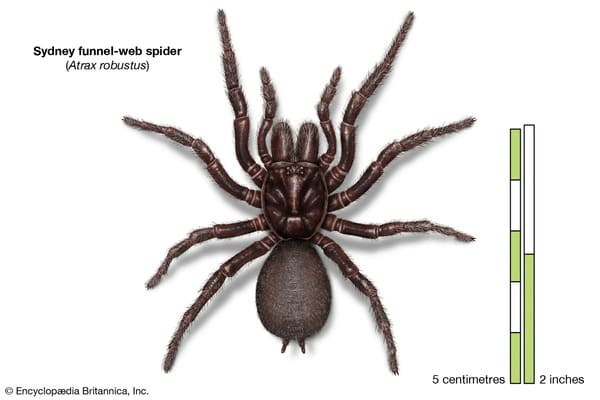
The Sydney funnel-web spider is a terrestrial spider, but prefers moist environments. They will cast tube-like nests with silk threads inside, and the holes of the nests will often have funnel-shaped webs woven into them. When these animals step onto the web at the entrance to their burrows, Sydney funnel-web spiders capture them and inject their venom. Females often stay in their own nests and feed on insects, lizards or frogs. Males generally only appear in the warm season, looking for suitable females to mate with. Therefore, humans are more likely to encounter male Sydney funnel-web spiders.
2. Brazilian Wandering Spider
The Brazilian wandering spider, also known as the banana spider, is also known as the banana spider because this spider is often found hiding in banana trees. The body length is 5-8 cm, mainly distributed in Brazil, Uruguay, Paraguay, and Argentina in Central and South America. Its toxicity is a neurotoxin. It is one of the most poisonous spiders in the world. Its toxicity can probably kill a mouse. It can cause nerve loss, difficulty breathing, and may lead to death in severe cases. This kind of spider will dance as a warning if it is threatened. Its maximum body length is about 5 centimeters, and its legs can be up to 15 centimeters in length.

The 10mm venom glands of the Brazilian wandering spider secrete enough venom to kill 225 mice. If a human is unfortunately bitten by it, symptoms such as irregular heartbeat, elevated blood pressure, and vomiting may occur. If not treated promptly, it may lead to death. Since 1926, 14 people have died from poisoning caused by bites from this spider. It is considered one of the most venomous spiders in the world, second only to the Sydney funnel-web spider, and was even awarded the title of "most venomous spider" by Guinness World Records in 2007.
3. Six-eyed Sand Spider
The six-eyed sand spider is a medium-sized spider with a body length of about 8 to 15 mm and a leg length of up to 50 mm. It has six eyes, arranged in three groups of two (called a "dyad"). "). In appearance, they resemble crab spiders and members of the genus Crabus. The six-eyed sand spider lives in the deserts of South Africa and can survive for long periods of time without food or water. Some can live up to fifteen years, making them one of the longest-lived spiders, second only to trapdoor spiders and wolf spiders, many of which live for twenty to thirty years. The oldest spider on record is Spider No. 16, a trapdoor spider that was killed by a parasitic wasp at the age of forty-three.
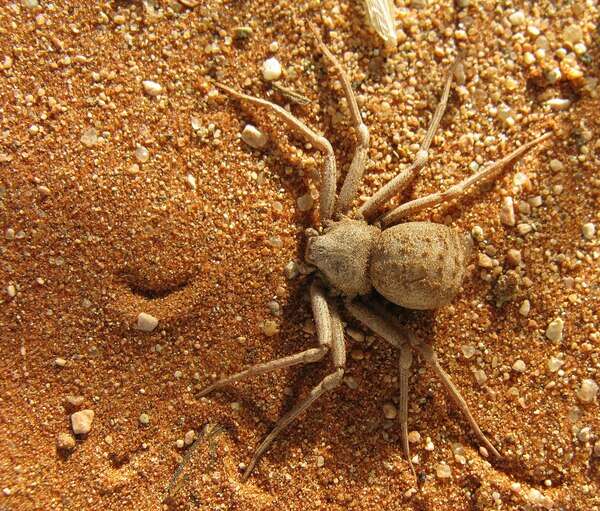
The venom of the six-eyed sand spider is considered one of the most deadly venoms in the world. It has been confirmed in experiments that its bite can kill rabbits within 5 to 12 hours. Toxicological studies have shown that its venom has a powerful effect on hemolysis and may cause extremely serious harm to humans. Once the venom enters the blood circulation system, it will cause blood vessels to rupture, leading to organ failure. As of 2018, there is no available antitoxin against its toxin, so bites can result in amputation or death.
4. Black widow spider
The black widow spider is a spider with strong neurotoxin. If a person is bitten, it may cause severe muscle pain. It is named because it eats its mate after mating. The scientific name is the black widow spider, which is a ball-bellied spider. Family, genus Corus. Its venom is highly toxic, making it one of the most venomous spiders in the world. Abroad, black widow spiders are mainly distributed in European countries along the Mediterranean Sea, and there have been many reports of injuries or even death to humans and animals. In China, its distribution is mainly concentrated in places such as Xinjiang and Yunnan. In recent years, with the expansion of human life, there have been many incidents of people and animals being bitten or even killed by black widow spiders in China.
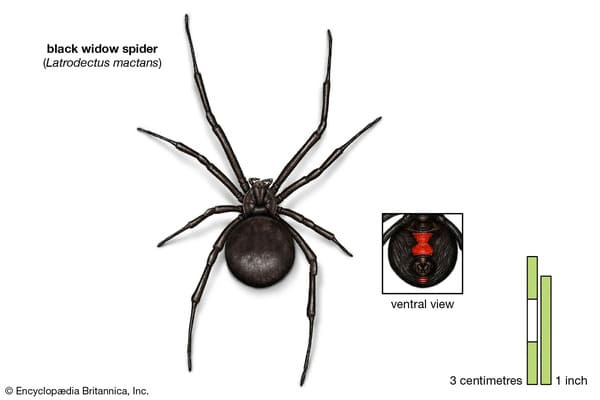
Although its venom is highly toxic, the injected dose is small, and deaths from widow spider bites are very rare. Only 63 cases were reported in the United States between 1950 and 1959. The venom of the black widow spider stimulates the release of the neurotransmitter acetylcholine. Acetylcholine acts on muscles and causes muscle contraction. Generally speaking, the venom of black widow spiders is more threatening to children and the infirm.
5. Brown recluse spider
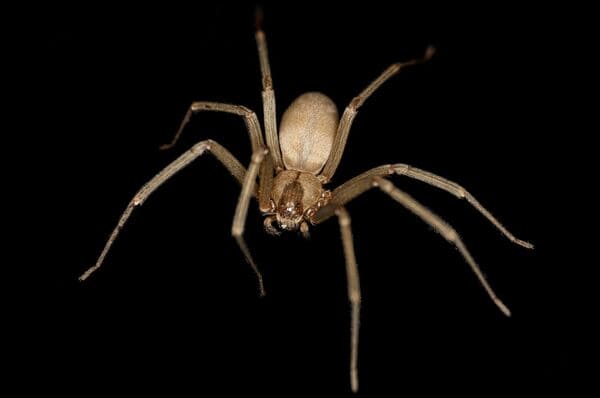
Brown recluse spider, also known as brown recluse spider, brown recluse spider, fiddleback spider, brown fiddler, violin spider, brown recluse spider, but the name violin spider can be used for other members of the same genus. It belongs to the genus Arachnida, a famous venomous spider that lives in southern North America. Their body length usually ranges from 6 to 20 mm, and some individuals may grow even larger. This spider is very venomous, and those who are bitten will soon develop symptoms such as erythema, ulceration, and nausea. Children, in particular, react violently after being bitten. According to reports, in 2014, a 5-year-old American boy died within a day after being bitten.
6. Rat spider
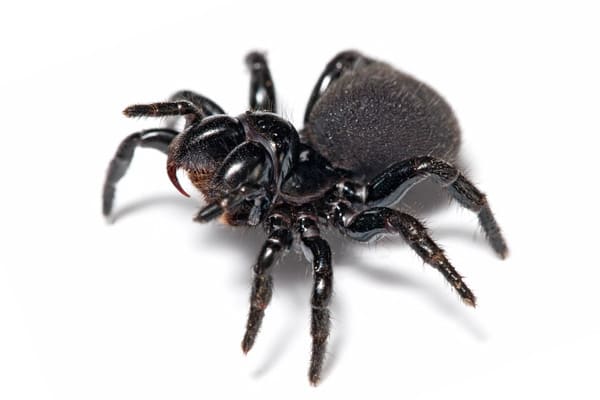
Mouse spiders belong to the class Arachnida under the phylum Arthropoda, suborder Orthognathia, and genus Actinopods. There are currently eleven known subspecies, ten of which are mainly distributed in Australia. Only one, M.tussulena, has been found in Chile. In the past, this spider was thought to live in caves like a mouse, hence the name, but it was later discovered that this was not the case. Unlike the Sydney funnel-web spider, the rat spider is not highly aggressive and does not even use venom when attacking, making it not a threat to humans.
7. Redback Spider
Redback spiders, also known as redback spiders or redback widow spiders, are mainly found in Australia. This spider is between 2 and 8 millimeters long and has obvious red stripes on its back. It is one of the most venomous spiders and is extremely aggressive. The venom in one redback spider can kill three adults. Once bitten, the victim's wound will begin to feel hot and painful within five minutes, and if not treated with serum, death may occur within hours. However, since 1955, only one fatality from a redback spider bite has been recorded, in April 2016.
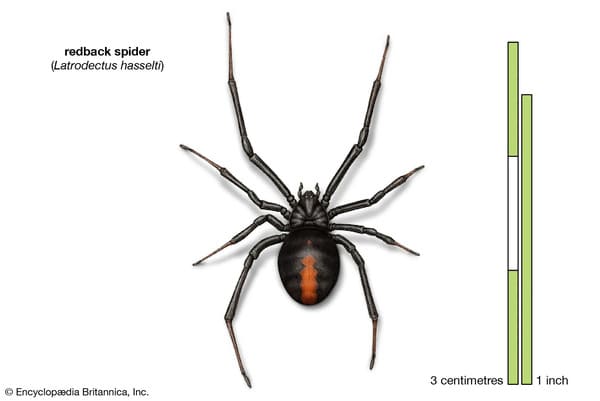
Redback spiders prefer to live in dark, dry places. After mating, the female redback spider injects digestive juices into the male spider's body and eats the male spider. According to research, female redback spiders have a lifespan of 2-3 years; male spiders have a lifespan of only 6-7 months, and 83% of male redback spiders die before mating.
8. Indian Ornate Rainforest Spider
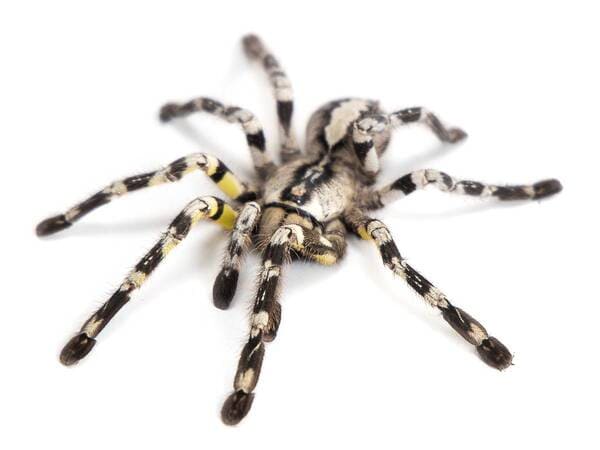
The Indian Ornate Rainforest Spider is an arboreal tarantula native to India. The main colors are gray and white. Arboreal spiders have a very vicious temperament and usually build webs to live in tree holes. These spiders are agile and aggressive, and tend to bite without warning. They are also more venomous than ordinary hairy spiders and should not be touched or petted. Some breeders have suffered serious consequences after being bitten, including severe pain that lasted for several days and twitching in the bitten arm, which may suggest that this spider has a certain neurotoxin.
9. Jingzhao Tassel Spider
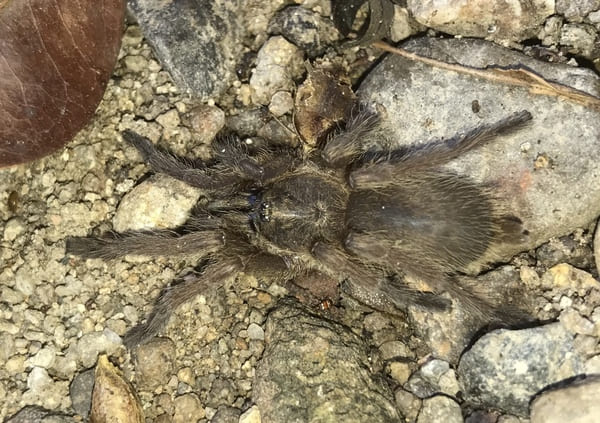
Jingzhao's tasseled hair spider is a unique underground burrowing tarantula in my country. It is a new species discovered by Zhao Jingzhao of Hubei University in recent years. Its shape is very similar to the Hainanese tarantula and tiger tarantula, but it is smaller than the Hainanese tarantula, with a yellowish-brown body color and no tiger stripes on the back of its abdomen. Body length is approximately 55 to 61 mm. This kind of spider is fierce and venomous. In recent years, domestic scientists have begun to study the pharmaceutical potential of the venom of this species. It is said that there are already relevant farms in Guangxi for large-scale breeding and research to extract toxins.
10. Yellow sac spider
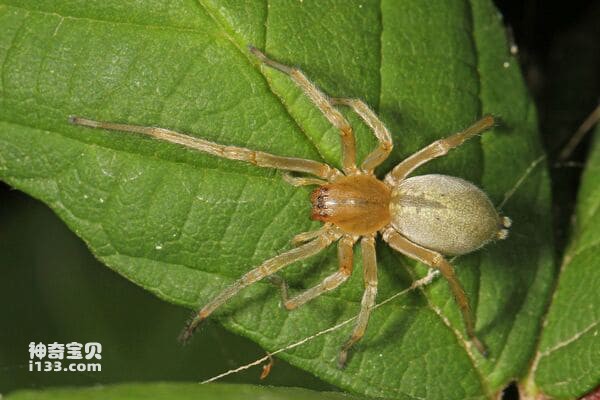
Yellow sac spiders are venomous spiders that are usually light-colored with an abdomen that ranges in color from yellow to yellow. Light brown. Sizes range from 5 to 10 mm for both sexes. They are unique among common house spiders in that although they are less venomous, yellow sac spiders rarely come close to humans and bite. One of the dangers of being bitten by a yellow sac spider is that it is closely associated with methicillin-resistant Staphylococcus aureus infection, which is so serious that it can lead to bone gangrene or tissue necrosis. However, there is still some controversy regarding the degree of venom of yellow sac spiders.
The list of the top ten poisonous spiders in the world is obtained by searching relevant online platforms, collecting highly poisonous spiders from around the world, and taking into account their popularity and influence. If you have any questions, comments, criticisms and corrections are welcome.
animal tags: Spider
We created this article in conjunction with AI technology, then made sure it was fact-checked and edited by a Animals Top editor.